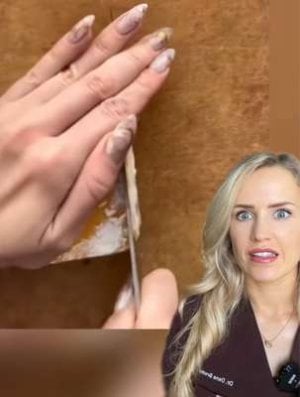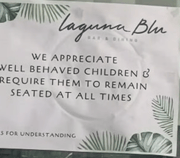A Doctor Reveals the Shocking Reasons Why Cutting Mould Off Cheese Could Be Dangerous for Your Health!
By
Danielle F.
- Replies 6
In the face of rising living costs, many Australians are looking for ways to stretch their budgets and avoid waste, particularly when it comes to food. Cheese, once a staple in many households, has become a luxury item for some. As a result, the practice of cutting off mould from cheese and consuming the remaining part has become a common money-saving tactic. However, medical professionals are now warning against this practice due to the potential health risks involved.
Dr Dana Brems, an American surgeon, has raised concerns about the dangers of simply slicing away the visible mould and eating the rest of the cheese. While this might seem like a thrifty solution, it could lead to unpleasant and even harmful consequences. Dr Brems likens mould to an iceberg: what you see on the surface is only a small part of the problem, with much more lurking beneath that can't be seen with the naked eye.
The risks associated with eating mouldy cheese vary depending on the type of cheese. Hard cheeses like cheddar can be more forgiving; if you cut at least one inch (almost three centimeters) around and below the mouldy spot, the cheese might still be safe to eat because mould doesn't penetrate as deeply into these dense cheeses. However, Dr Brems advises washing the knife between cuts to prevent cross-contamination.
On the other hand, softer cheeses present a greater risk. Varieties such as blue cheese, brie, camembert, and gorgonzola are difficult to save once mould appears. These cheeses have higher water content, which can foster the growth of harmful bacteria alongside the mould. For soft cheeses, if you spot mould, it's safest to discard the entire product.
Pre-shredded or sliced cheeses that have developed mould should also be thrown out immediately. The risk of nausea, vomiting, or allergic reactions is higher with these products, and they should not be consumed if mould is present.
Australian food scientist Gary Kennedy supports Dr Brems' stance, especially regarding soft cheeses and other soft foods like jam and tomato sauce. Kennedy warns that the visible mould is just the tip of the iceberg, and the unseen parts can be toxic. Bread, which falls between soft and hard food, can be salvaged by removing a few slices around the mouldy piece to ensure the roots are also removed.
Repeated exposure to mould can have effects similar to chemical poisoning, a fact that should not be taken lightly. Despite some Europeans and Australians expressing outrage at the advice to discard mouldy cheese, claiming that certain types of mould are safe to eat, Dr Kennedy emphasizes that the mould found in Australia can be different and potentially more dangerous than that found in other parts of the world.
Watch Dr Brems' tip here:
Source: footdocdana/Tiktok
For our senior readers, it's particularly important to be cautious. If you're immune-compromised or have a mould allergy, the risks are even greater. The best course of action is to avoid taking any chances with mouldy cheese and to dispose of it.
While it may be painful to throw away food, especially when budgets are tight, the potential health risks of consuming mouldy cheese are not worth the gamble. It's always better to err on the side of caution and prioritize your health over saving a few dollars. If you find yourself frequently having to discard mouldy cheese, consider buying smaller quantities more often to prevent waste and protect your health.

We'd love to hear from our readers. Have you ever cut mould off cheese and eaten the rest? Will this information change how you handle mouldy cheese in the future? Share your thoughts and experiences in the comments below!
Dr Dana Brems, an American surgeon, has raised concerns about the dangers of simply slicing away the visible mould and eating the rest of the cheese. While this might seem like a thrifty solution, it could lead to unpleasant and even harmful consequences. Dr Brems likens mould to an iceberg: what you see on the surface is only a small part of the problem, with much more lurking beneath that can't be seen with the naked eye.
The risks associated with eating mouldy cheese vary depending on the type of cheese. Hard cheeses like cheddar can be more forgiving; if you cut at least one inch (almost three centimeters) around and below the mouldy spot, the cheese might still be safe to eat because mould doesn't penetrate as deeply into these dense cheeses. However, Dr Brems advises washing the knife between cuts to prevent cross-contamination.
On the other hand, softer cheeses present a greater risk. Varieties such as blue cheese, brie, camembert, and gorgonzola are difficult to save once mould appears. These cheeses have higher water content, which can foster the growth of harmful bacteria alongside the mould. For soft cheeses, if you spot mould, it's safest to discard the entire product.
Pre-shredded or sliced cheeses that have developed mould should also be thrown out immediately. The risk of nausea, vomiting, or allergic reactions is higher with these products, and they should not be consumed if mould is present.
Australian food scientist Gary Kennedy supports Dr Brems' stance, especially regarding soft cheeses and other soft foods like jam and tomato sauce. Kennedy warns that the visible mould is just the tip of the iceberg, and the unseen parts can be toxic. Bread, which falls between soft and hard food, can be salvaged by removing a few slices around the mouldy piece to ensure the roots are also removed.
Repeated exposure to mould can have effects similar to chemical poisoning, a fact that should not be taken lightly. Despite some Europeans and Australians expressing outrage at the advice to discard mouldy cheese, claiming that certain types of mould are safe to eat, Dr Kennedy emphasizes that the mould found in Australia can be different and potentially more dangerous than that found in other parts of the world.
Watch Dr Brems' tip here:
Source: footdocdana/Tiktok
For our senior readers, it's particularly important to be cautious. If you're immune-compromised or have a mould allergy, the risks are even greater. The best course of action is to avoid taking any chances with mouldy cheese and to dispose of it.
While it may be painful to throw away food, especially when budgets are tight, the potential health risks of consuming mouldy cheese are not worth the gamble. It's always better to err on the side of caution and prioritize your health over saving a few dollars. If you find yourself frequently having to discard mouldy cheese, consider buying smaller quantities more often to prevent waste and protect your health.
Key Takeaways
- Doctors, including American surgeon Dr Dana Brems, have advised against cutting off mould from cheese and consuming the remainder.
- Mould on cheese can run deeper than what can be seen, and softer cheeses like brie and camembert should be thrown out if mould appears, due to potential health risks.
- Australian food scientist Gary Kennedy concurs, suggesting that eating mouldy soft foods can pose serious health risks and can have effects similar to chemical poisoning.
- While some Europeans may have differing views on mouldy cheese, experts warn that the types of mould found in Australia could be different and more hazardous.








